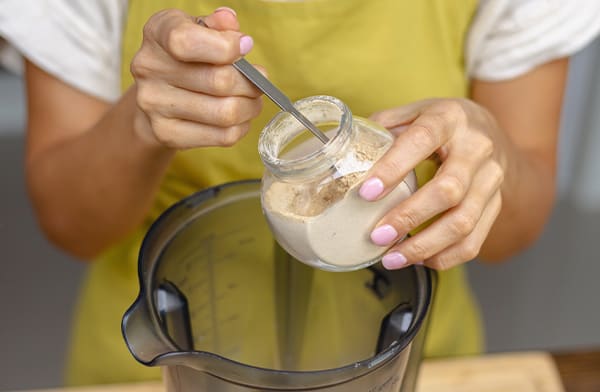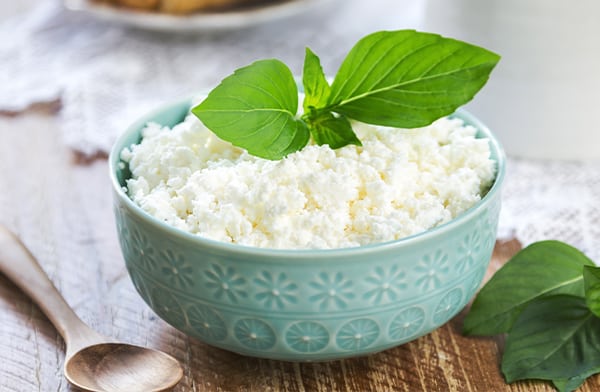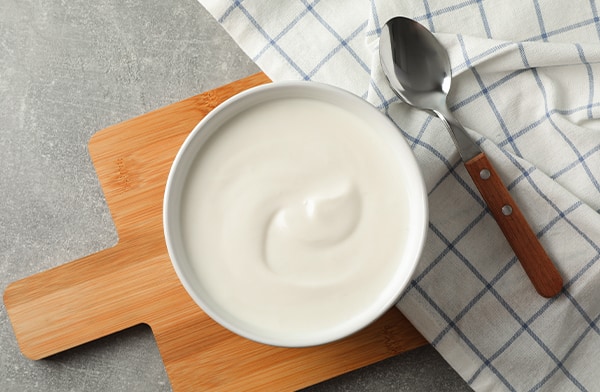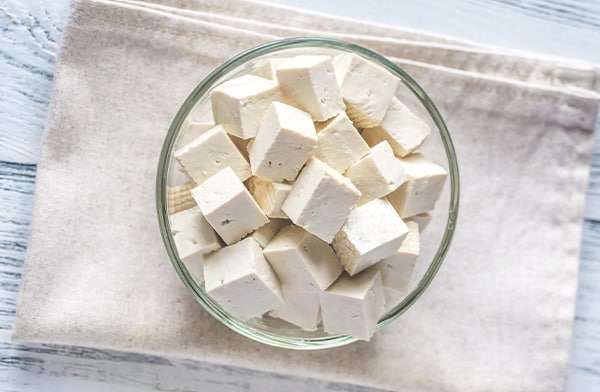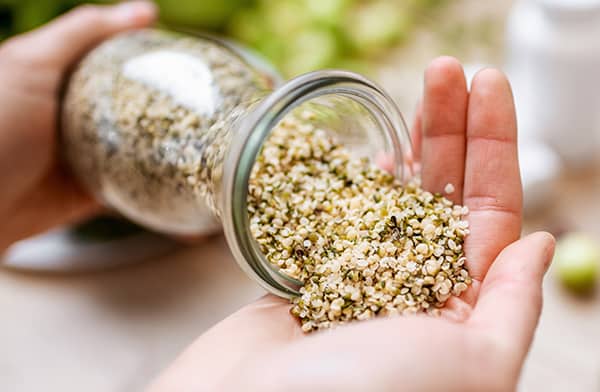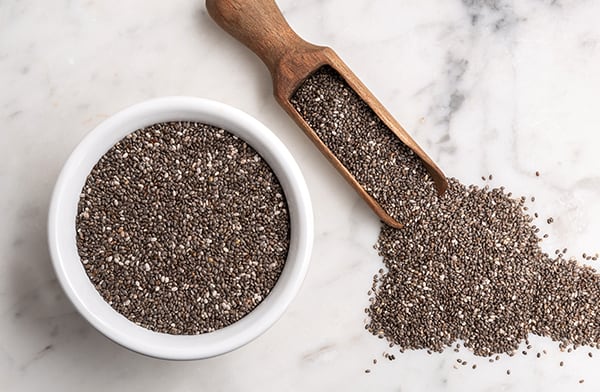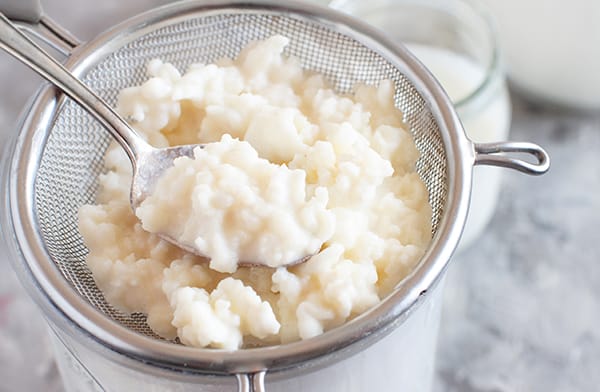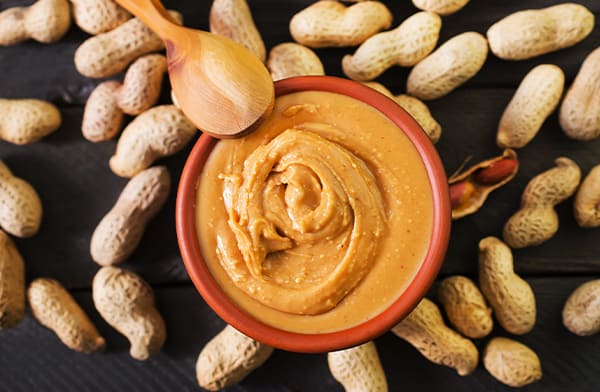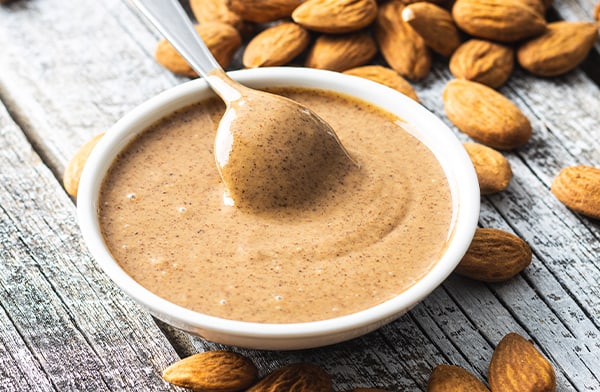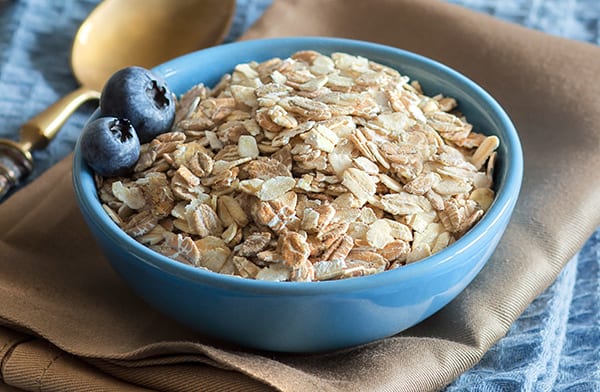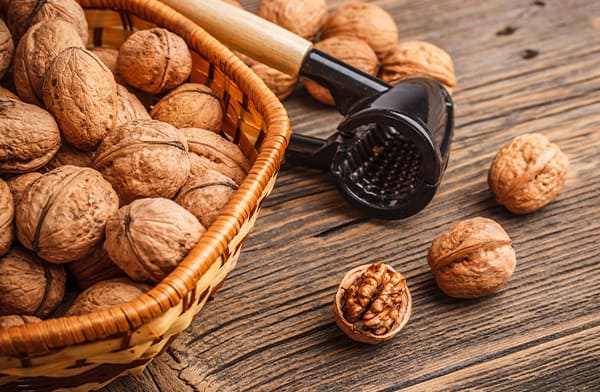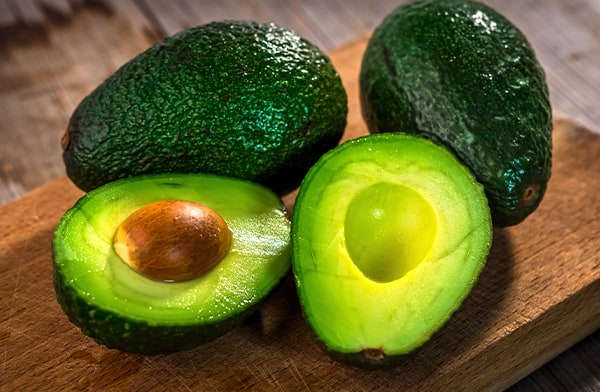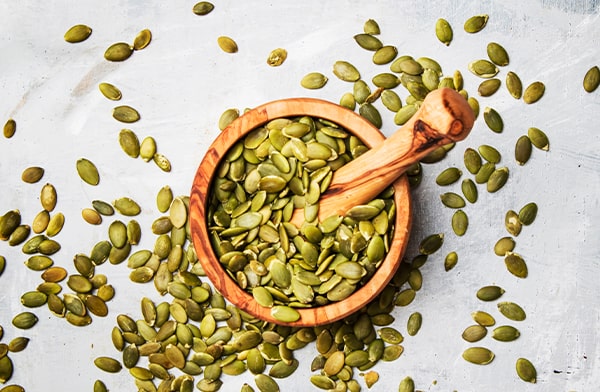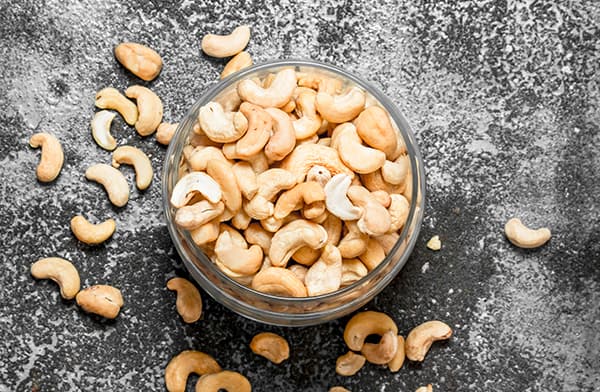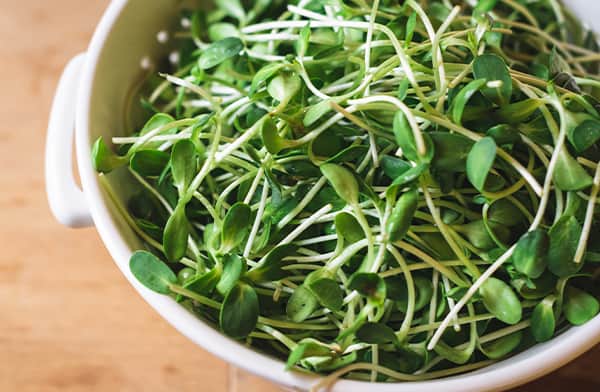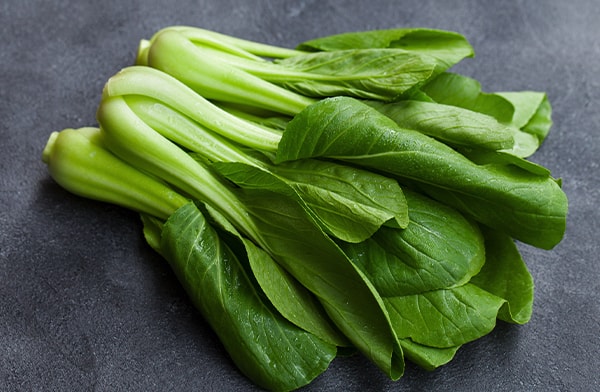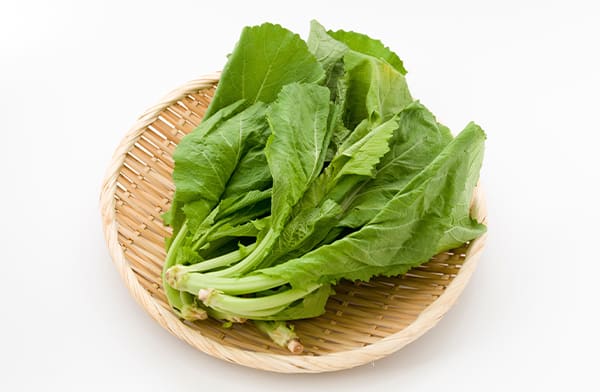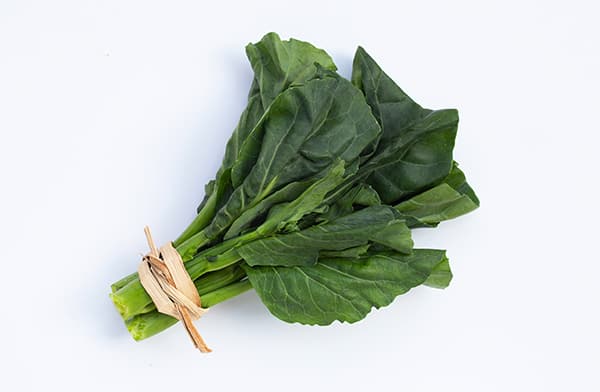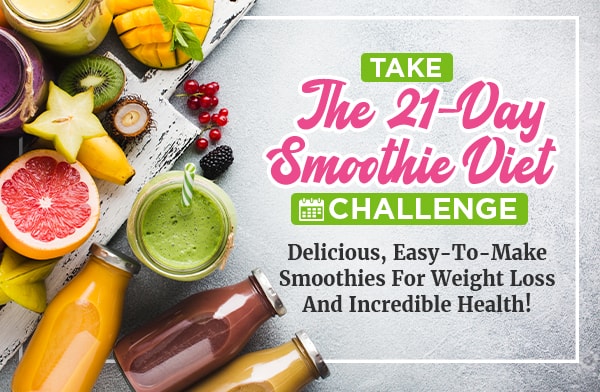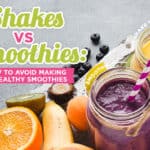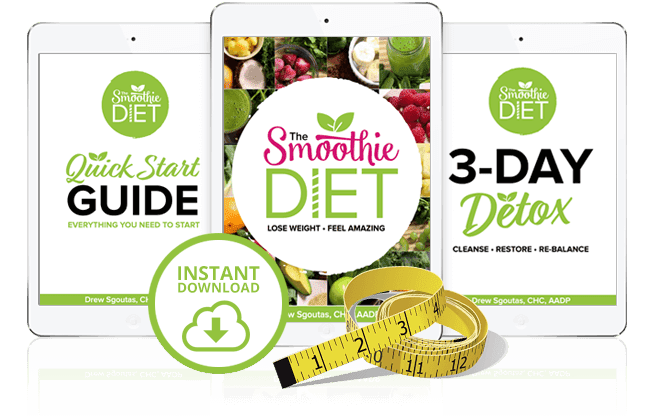18 Ways You Can Add More Protein to Your Smoothies
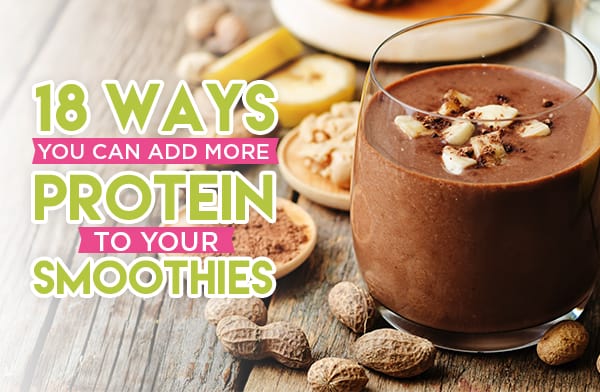
Smoothies are a great way to replace a meal and help you lose weight, but they have one particular downside. Some smoothies don’t last!
How often have you had a smoothie to drink, expecting it to see you through to lunch or dinner, only to get hungry an hour later? How often do you get a nice spike of energy, only to crash well before your next break? The reason this happens is that smoothies come in many forms. Sadly, many of the smoothies you can get from your local smoothie bar are atrocious for this. They have no substance. They’re just glorified fruit juice and ice water, really.
You might have even noticed that sometimes when you make a smoothie at home, it lasts a lot longer and keeps you going at higher energy. So what’s the deal?
Protein. Protein is the deal.
Protein is an energy source your body uses when it doesn’t have readily available carbs to burn. It’s harder to digest, so it lasts longer. It gives less energy, but it gives you that energy over a longer time. It’s also a critical part of a healthy diet.
Chances are if your smoothies lack substance and you aren’t satisfied drinking them, you need to add more protein. The only question is, how? Well, I have 18 options for you to try, which fit all different flavor profiles and recipes, so you always have some options available.
1: Protein Powder
Protein powder is the easiest and fastest way to add protein to your smoothies. Since it’s a neutral-flavored powder (or has a natural flavor like chocolate or strawberry), it’s easy to add to any smoothie recipe. It’s also the most protein-dense option, with one scoop giving you anywhere from 10 to 30 grams of protein.
That said, many people don’t like powdered supplements, and I don’t blame them. You never know what has been added to the powder, from sugar to preservatives. It also may be too much protein for some people and can cause stomach problems. It’s here as an option of convenience, but I’d recommend one of the other seventeen.
Remember that you get protein in all of your meals and that you only need so much of it each day. General recommendations are that you should eat around .36 grams of protein per pound of bodyweight, so a 200lb person looking to lose weight should eat 72 grams of protein per day.
2: Cottage or Ricotta Cheese
Dairy isn’t unusual in a smoothie, but cheese? Well, hey, cottage cheese with some fruit is a tasty snack, so why not go all-in on the idea and add cottage cheese to a smoothie?
Ricotta is a similar cheese with a slightly different texture and flavor. Both of them will give you about 14 grams of protein per half-cup of cheese, so pick the one that you like better.
3: Greek Yogurt
Greek yogurt is better in almost every way than regular yogurt. It has less sugar, it has more flavor, it works better as a thickener, and it has more nutritional value. Half a cup of Greek yogurt gives you 11.5 grams of protein, too. Compare that to regular yogurt, which is 6.5 grams per half-cup, and you see what I mean.
You’ll usually want to grab plain Greek yogurt, not a flavored yogurt. That way, it won’t disrupt whatever other flavors you’re using, and it won’t have a bunch of added sugar from the addition of fruit and other ingredients.
4: Tofu
Tofu might sound like a strange addition to a smoothie at first glance, but it’s surprisingly tasty. Tofu usually has a relatively neutral flavor. It’s a little sour but mostly bland. That’s why so many people love it; it’s like a building block you can flavor any way you want.
That makes it perfect for smoothies, too. It works with any recipe, though you’ll want to watch out and make sure you don’t make a smoothie that’s too thick to drink. Add more liquid to compensate. A quarter cup of firm tofu will give you around 11 grams of protein.
5: Hemp Seeds
Hemp has been growing as a health supplement over the last decade or so, despite a very long history of use by native cultures. As a plant, it’s very useful, but as a dietary ingredient, it’s mostly the seeds you want. Hemp seeds have a distinct flavor that some people don’t really like, so try them before you get too invested, just in case you’re not a fan.
That said, you don’t need a ton to give you extra protein. Two tablespoons might seem like a lot but mixed into a full-sized smoothie; it’s not as much as it sounds. That serving gives you a little over 6 grams of protein and a bunch of other nutrients to boot.
6: Chia Seeds
Chia seeds are a milder flavor than hemp, but otherwise, they’re pretty similar. They’re both tiny seeds that are much smaller than most other seeds you typically eat, and they both add protein to your smoothies. Chia seeds (two tablespoons of them) will give you 5 grams of protein.
Some people don’t like hemp or chia seeds because they are tiny little seeds and add a particular kind of texture to a smoothie. If you don’t like that texture, you can consider blitzing the seeds in a spice grinder or breaking them down with a mortar and pestle first.
7: Kefir
Kefir is like the little brother of yogurt. It’s thinner than yogurt and is meant to be a beverage of its own. It has less protein than Greek yogurt (and even regular yogurt), with only 4.6 grams of protein in half a cup. What it lacks in protein, though, it makes up in flavor. Kefir has a strong sour flavor because it’s a fermented yogurt.
More importantly, kefir is absolutely packed with probiotics, which are a healthy addition to your diet. Probiotics help support gut health, which makes your digestion smoother and minimizes bad bacteria in your gut.
8: Peanut Butter
Peanut butter has been one of the most widely recommended sources of protein for smoothies for a very long time. And really, who doesn’t like peanut butter? It’s thick; it’s rich, it’s decadent, it’s like having an illicit snack in your smoothies. And yet, peanut butter is full of nutrients and packed with protein. A single tablespoon has 3.6 grams of protein, and you might be adding more than one, depending on your smoothie recipe.
The biggest downside to peanut butter, really, is that it’s made out of peanuts. If you suffer from a peanut allergy (or just don’t like the flavor), it’s disappointing to see it everywhere. Luckily, there’s an alternative too.
9: Almond Butter
Almond butter is an alternative to peanut butter. It’s very slightly higher in calories and very slightly lower in protein, but we’re talking very slight differences here. Peanut butter has 96 calories in a tablespoon, while almond butter has 98. Peanut butter has 3.6 grams of protein, while almond butter has 3.4. For most purposes, they’re basically identical.
The main benefits of almond butter are the flavor difference and the nut difference. Flavor-wide, almonds are more neutral, a little lighter, and distinct in a different way. And the nut difference, of course, means that even those allergic to peanuts can try out almond butter. At least, probably, some people who are allergic to peanuts are allergic to all tree nuts, and almonds are also a tree nut, so be careful.
10: Oats
Oats are another good way to add protein to your smoothies, and they have a bunch of fiber too.
Oats are relatively neutral in flavor, but they can be tough and chewy.
- Quick/Instant oats are pre-ground and are easy to add naturally as any other smoothie ingredient.
- Rolled oats are thin but can be a little tough, so you can blend them up a bit first to grind them down.
- Steel-cut oats are thicker and tougher and should be soaked in a liquid for a few hours or overnight before making your smoothie.
Oats are very flexible, so feel free to play around and find a variety that you like. A quarter cup of dry oats has about 2.7 grams of protein, so you’re still getting a decent amount.
11: Walnuts
Walnuts are another nut with a distinct flavor. They’re also another tree nut, so if you have tree nut allergies, go ahead and skip them. If you don’t, though, you can give them a try.
Walnuts are tasty, and two tablespoons of chopped walnuts will give you 2.2 grams of protein. You might want to chop them more finely than they’re chopped when you buy them, depending on how you like or don’t like the texture of the nuts.
12: Avocado
Avocado is generally recommended as a source of healthy fats, and it’s absolutely excellent at that purpose. It’s tasty, it’s smooth, and it works well blended into virtually any kind of smoothie. But did you know that avocado has some protein in it too?
It’s not exceptionally high – only 2.8 grams for a whole California avocado – but it’s still something. Forget the avocado toast; adding avocado to a smoothie is where it’s at.
13: Pumpkin Seeds
Pumpkin seeds get a bit of a bad rap. Too many people only have one experience with them, and that’s those horribly salty, pure-white “snacks” found at the grocery store.
No, pumpkin seeds aren’t salty like that naturally. They’re actually quite mild, and they aren’t tough at all once you pull them out of their shells. If you get hulled, unsalted pumpkin seeds, two tablespoons of them will give you close to 4.5 grams of protein.
14: Cashews
Cashews are a delicious nut, but they’re expensive compared to many others. They’re also relatively high in healthy fats. If you get them unsalted, they’re pretty healthy for you. Two tablespoons of cashews give you about 3.4 grams of protein, which is plenty for a simple addition to a smoothie.
On a side note, if you’ve never checked out how cashews grow, I recommend looking it up. It’s wild!
15: Sprouts
Sprouts, particularly alfalfa sprouts, are tiny little seedlings of a plant that are eaten whole. They’re tasty, tender, and a great green to add to a lot of different foods. 70% of the (relatively low) calories of sprouts come from the protein they contain.
A cup of sprouts is 1.3 grams of protein, which might not seem like much, but when you realize how many other nutrients are in the veggie, you can see how powerful they can be. Just use caution if you’re pregnant; sprouts are one of the ingredients you should avoid.
16: Bok Choy
Bok Choy is one of my favorite veggies to recommend for smoothies. It’s a healthy green, but it’s outside of the usual flavor profiles and typical greens everyone always recommends. A cup of bok choy contains 1.1 grams of protein, which, again, might not seem like much for the volume.
However, a cup of greens blends down quite a lot since greens tend to be fluffed up with a lot of natural water. Bok choy is also packed full of antioxidants and other healthy nutrients, so it’s a great veggie to introduce into your rotation.
17: Mustard Greens
Mustard greens are a brassica, which you might recognize as being the same plant family as around half of the veggies we eat. Seriously, broccoli, brussels sprouts, cabbage, cauliflower, kale, and turnips are all brassica, and that’s not even all of them.
Mustard greens are probably the most potent tasting veggie I’d recommend adding to a smoothie. Their flavor is very distinct, like mustard (the spice, not the condiment) which can be a great compliment to certain smoothies. A cup of mustard greens is 1.6 grams of protein.
18: Collard Greens
Another brassica, collard greens, are a staple down south but aren’t as common up north and elsewhere in the world.
A cup of them is 1.1 grams of protein, along with a whole host of other nutrients. In particular, they’re packed with vitamin K, C, and folate, as well as fiber.
So, there you have it; 18 options for ways to add more protein to your smoothies. There’s something here for everyone, no matter what flavor profile you’re going for. Fruity? Nutty? Chocolate? Green? There’s a choice for you. And hey, I know this isn’t a comprehensive list. So, if you have a favorite protein-packed ingredient to add to your smoothies, let me know in the comments!

